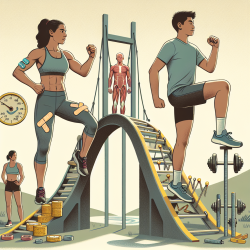Understanding Running-Related Injuries: Insights for Practitioners
Running is a popular form of exercise enjoyed by people of all ages. However, it comes with its own set of challenges, particularly running-related injuries (RRIs) that can affect both adult and adolescent runners. A recent study titled A Comparison of Factors Associated with Running-Related Injuries between Adult and Adolescent Runners sheds light on the differences and similarities in injury risk factors between these two groups.
Key Findings from the Study
The study involved 38 adult runners and 91 adolescent runners, analyzing their training habits, physical assessments, and injury histories. Here are some notable findings:
- Adult runners often reported intentional weight-loss to enhance performance, which was less common among adolescents.
- Functional Movement Screen™ (FMS™) scores were lower in adults, indicating potential biomechanical issues.
- Resistance training was more prevalent among adult runners, while adolescents were less likely to include it in their routines.
- Runners with a history of RRIs had shorter single leg bridge durations, suggesting weaker neuromuscular control.
Implications for Practitioners
For practitioners working with runners, these findings offer valuable insights:
- Biomechanical Assessments: Utilize tools like the FMS™ to identify and address biomechanical deficiencies in both adult and adolescent runners.
- Weight Management: Educate runners on the risks associated with intentional weight-loss and promote healthy, sustainable practices.
- Resistance Training: Encourage the incorporation of resistance training, particularly for adolescents, to enhance muscle strength and endurance.
- Neuromuscular Control: Focus on exercises that improve neuromuscular control, such as single leg bridges, to reduce the risk of RRIs.
Encouraging Further Research
While this study provides a foundational understanding of RRIs across age groups, it also highlights the need for further research. Practitioners are encouraged to explore additional factors such as weekly mileage, dietary habits, and psychological aspects that may influence injury risk. By expanding our knowledge, we can develop more effective prevention strategies tailored to individual needs.
Conclusion
Running-related injuries are a concern for both adult and adolescent runners. By understanding the factors that contribute to these injuries, practitioners can implement targeted interventions to minimize risk and promote long-term health and performance. For those interested in diving deeper into the research, the original study offers a comprehensive analysis of these critical issues.
To read the original research paper, please follow this link: A Comparison of Factors Associated with Running-Related Injuries between Adult and Adolescent Runners.










